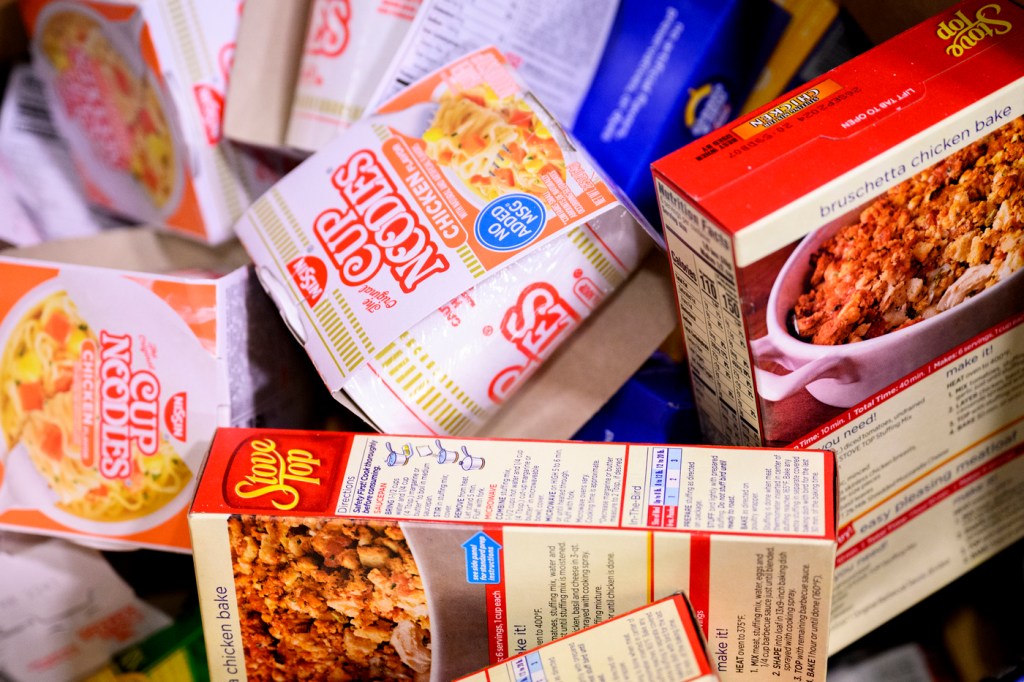How do food donations work? What kind of products might be needed at a local food pantry
You might be inspired to give back this time of year, but here’s the best way to approach food donations.

As people stroll the aisles doing their shopping for a holiday meal, they might be tempted to grab a canned good or two for their local food drive or pantry.
But they may be better off grabbing something more fresh.
While this time of year might inspire people to give back, consider buying extra fresh products to give, says John Lowrey, an assistant professor of supply chain and information management and health sciences at Northeastern University who has done research on food donations and waste.
“There is a push to recover healthier food products,” Lowrey says. “It’s harder to recover these more perishable food products that are potentially healthier because of shelf life considerations over packaged or canned items that have a longer shelf life and can be transported and distributed more easily.”
How is food donated?
There are a variety of ways food is rescued and donated, Lowrey explains. The main method is through food banks, which recover and repurpose food from retailers. These retailers often make the call on what products to give and usually have certain rules set in place for donations. For example, a grocery store might donate milk with only three days of shelf life left.
The limits on perishable items mean many donations end up being shelf-stable products as fresh food donations can only be used for a limited time. Instead, retailers and individual donors end up giving packaged foods that are sometimes ultra processed.

Can donations raise prices?
If a retailer does shift tactics to donate food with more shelf life left in it — for example, donating milk with a week before its expiration date — it can increase quality, but also raise prices for buyers.
“Donations kind of allow these stores to change in-store routines a little bit to favor food products with higher quality levels or higher food prices,” Lowery says. “From the retailer’s perspective, this is good because it can increase revenue or profit margin on each individual food product, but it all can kind of complicate the food access story.”
When prices go up, Lowrey says it creates competition between stores, but it can also price consumers out and restrict their food access.
“From a low-income consumer’s perspective, it might be difficult,” Lowrey says. “Now (they’re) faced with purchasing high-priced food products or picking them up for free from the food bank that has lower-quality food products. It can complicate the price component of food access.”
Ditch the junk food
Lowrey says many food banks and pantries are trying to keep foods like chips and candies off their shelf, but these types of products end up being the most prevalent due to their shelf life and how easy they are to distribute.
What can those looking to donate do to help combat this? Lowrey said buying fresh products while they still have a lot of shelf life left and donating some can help get healthier products into food banks and pantries.
“I think the most effective strategy is purchasing more than you think you will need,” Lowrey says. “Then, if you don’t interact or consume any part (of that product), drop it off to a local pantry so that they can use it and donate it.”
Lowrey also recommends donating any leftover unused products. He said people should go to local food pantries as opposed to food banks that are dealing with a higher volume of donations.







